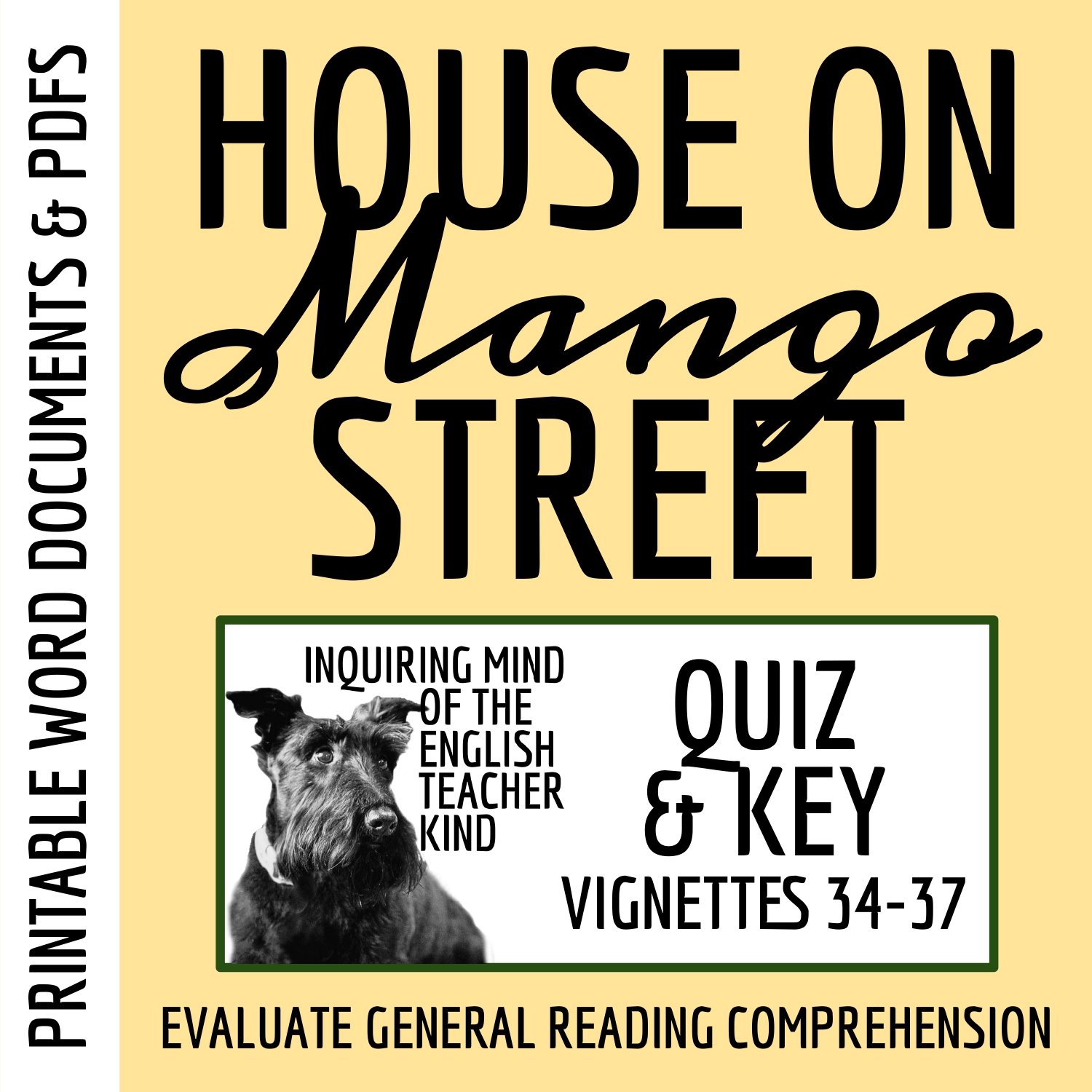 Image 1 of 4
Image 1 of 4

 Image 2 of 4
Image 2 of 4

 Image 3 of 4
Image 3 of 4

 Image 4 of 4
Image 4 of 4





The House on Mango Street "Our Good Day" Close Reading Inference Worksheet
Help middle and high school students improve critical thinking skills and explore literary elements with this close reading analysis worksheet covering vignette 6 of The House on Mango Street by Sandra Cisneros ("Our Good Day"). An answer key is provided. Materials are delivered in editable Word Document and printable PDF formats. (Alternatively, a Google Drive option is available.) By engaging with this close reading inference activity, students will:
Read for literal comprehension
Consult reference materials to learn and verify word meanings as needed
Infer the intended effects of the author's word choices and narrative techniques
Explore how characters think, behave, interact, and develop
Compare Esperanza to Rachel and Lucy
Evaluate whether Esperanza feels content to make a sacrifice in exchange for her friendship
Analyze the bicycle for symbolic value in Esperanza's life
Apply knowledge of literary devices including simile and situational irony
Support claims and inferences with relevant evidence and sound reasoning
Write about literature with clarity, accuracy, and precision
Come to class better prepared to discuss literature
Consider using this resource as an in-class group activity. It may facilitate deeper conversations about characters, plot developments, and literary craft. Be advised that copyright law does not permit the inclusion of complete novel content, so the purchaser is responsible for providing students with the text.
Find more resources for teaching young adult fiction:
Help middle and high school students improve critical thinking skills and explore literary elements with this close reading analysis worksheet covering vignette 6 of The House on Mango Street by Sandra Cisneros ("Our Good Day"). An answer key is provided. Materials are delivered in editable Word Document and printable PDF formats. (Alternatively, a Google Drive option is available.) By engaging with this close reading inference activity, students will:
Read for literal comprehension
Consult reference materials to learn and verify word meanings as needed
Infer the intended effects of the author's word choices and narrative techniques
Explore how characters think, behave, interact, and develop
Compare Esperanza to Rachel and Lucy
Evaluate whether Esperanza feels content to make a sacrifice in exchange for her friendship
Analyze the bicycle for symbolic value in Esperanza's life
Apply knowledge of literary devices including simile and situational irony
Support claims and inferences with relevant evidence and sound reasoning
Write about literature with clarity, accuracy, and precision
Come to class better prepared to discuss literature
Consider using this resource as an in-class group activity. It may facilitate deeper conversations about characters, plot developments, and literary craft. Be advised that copyright law does not permit the inclusion of complete novel content, so the purchaser is responsible for providing students with the text.
Find more resources for teaching young adult fiction:
Preview this resource:
Help middle and high school students improve critical thinking skills and explore literary elements with this close reading analysis worksheet covering vignette 6 of The House on Mango Street by Sandra Cisneros ("Our Good Day"). An answer key is provided.






























